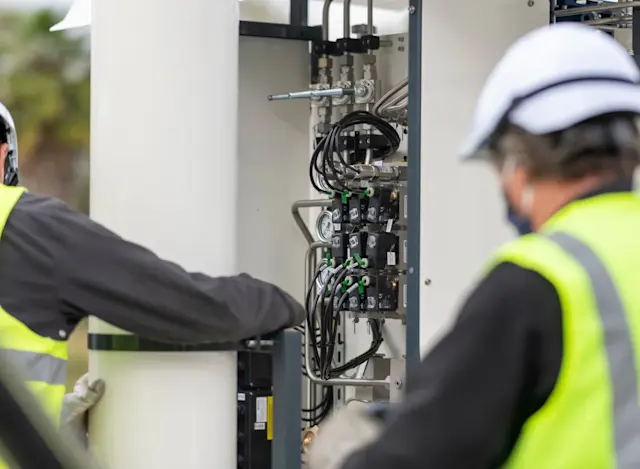Urgence gaz 0 800 028 800

NGV and bioNGV: advantages for a mobility that is more respectful of the environment and the regions
Decarbonising mobility is a key issue in effectively responding to the challenges of the climate and energy transitions. Natural Gas for Vehicles (NGV) and its renewable version, bioNGV, a compound derived from biomethane, offer a virtuous and immediately available alternative and in economic conditions comparable to diesel. Several regions have already opted for NGV, find out why.
NGV and bioNGV: the choice of mobility in favour of the environment and the circular economy
To meet environmental requirements, tomorrow’s mobility will have to be based on a more varied mix of fuels, local and less carbon-intensive. As such, Natural Gas for Vehicles (NGV) appears to be a good alternative to traditional fuels as it emits fewer fine particles and NOx. Today, the acceleration of biomethane production (through methanisation, methanation, pyro-gasification, etc.) even points the way to biomethane eventually replacing natural gas. BioNGV thus allows us to go further in reducing greenhouse gas emissions since it divides CO2, NOx and fine particle emissions compared to diesel by at least 4.
The advantages of NGV and bioNGV

NGV vehicles: simple to use and economic for users
NGV engines use a mature technology that can be implemented easily. Indeed, there is already a vehicle offering in all mobility segments (from light to heavy vehicles, including specialised vehicles) available at competitive prices. Vehicles already in circulation can also be refitted to use NGV.
Moreover, using NGV has many advantages which make its uptake by users easier:
range of between 400 to 800 km depending on the size of the tanks at a pressure of around 200 bars,
refilling which is as fast as for diesel or petrol,
access to city centres thanks to the Crit'air level 1 sticker for which NGV vehicles qualify (required by 2025 in low-emission zones),
vehicles offering recognised driving comfort, with, notably, engine noise cut in half.
Occitanie and Nouvelle-Aquitaine: favourable regions for bioNGV
In 2020, 21 NGV stations were already installed in the area in which Teréga operates, a number which will be multiplied by 3 by 2024. We have been involved for a long time in developing low-carbon mobility in the South-West of France and in the renewable origin gas sector. Every year, we help biomethane producers to connect to our gas grid, thereby enlarging the bioNGV offering. This means that if the biomethane resources of Occitanie and Nouvelle-Aquitaine were entirely dedicated to mobility, they could refill the tanks of 55,000 heavy goods vehicles per day!
How to properly prepare your NGV station project?
Before beginning the process of connecting up a refuelling station, it is important to prepare your project: market research, identification of networks, etc. Please feel free to get in touch with Teréga experts before starting your project to properly size it. We assist public and private actors with their NGV/bioNGV refuelling station project, from the initial thinking phase to entry into service.

Why connect an NGV refuelling station to our gas transport grid?
In refuelling stations for the general public, NGV is supplied in the form of CNG (Compressed Natural Gas). Connecting to the gas transport grid harnesses the availability of high pressure (45 bars on average over the Teréga grid), which reduces electricity compression costs by a ratio of around 2 to 2.5. Thus, an NGV station which is built near the transport grid, supplied at 40 bars instead of 4 bars and which distributes around 1,000 tonnes/year (eq. 15 GWh GCV), could result over 12 to 15 years in a saving equivalent to the cost of the station itself (excluding civil engineering).
To be connected to the transport grid, an NGV station project leader must obtain a favourable assessment from the regulator (CRE) in accordance with the mechanism of the mobilities framework act of 12/2019 (“LOM” act) and its implementing decree of 06/2020.
It’s your turn to compare!
Teréga has developed this comparison tool, which calculates how much each of the standard fuels should cost to travel the same distance with the same budget, as well as the number of kilometres that can be travelled with a budget of €1000 (including tax) regardless of the fuel.
To use the Teréga fuel price comparison tool:
Replace the guide values from our example in the white box with the fuel of your choice and its price.
Look at the grey boxes to see the parity price of the fuels and the distance travelled for €1000 (including tax) depending on the different types of vehicle.
Note: the comparison tool results are for guidance only, and Teréga cannot be held liable for them.








